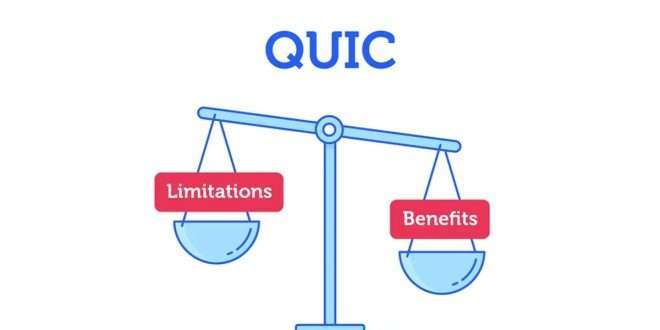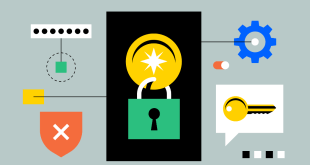The internet is evolving rapidly, and with it, the need for secure and efficient communication between servers and clients has become paramount. Hypertext Transfer Protocol Secure (HTTPS) has long been the standard for secure data transfer on the web. However, a revolutionary protocol called QUIC (Quick UDP Internet Connections) is poised to transform the way HTTPS is implemented, offering faster and more reliable connections.
Introduction
In this blog, we delve into the rising prominence of QUIC and its potential to revolutionize HTTPS implementation. We will explore the key aspects of QUIC, its benefits over the traditional TCP-based connections, and its impact on website performance and security. By the end of this article, you will gain a comprehensive understanding of why QUIC is garnering attention and why it’s crucial for modern web developers to consider its adoption.
What is QUIC?
QUIC is a cutting-edge transport protocol developed by Google that aims to optimize the performance of internet connections. Unlike the traditional TCP (Transmission Control Protocol) used in HTTPS, QUIC operates on top of the User Datagram Protocol (UDP). This unique characteristic allows QUIC to establish connections more swiftly and efficiently, reducing latency and enhancing overall user experience.
Advantages of QUIC over TCP
Faster Connection Establishment:
QUIC employs a streamlined handshake process, enabling quicker connection establishment compared to TCP. It reduces the number of round trips required to set up a connection, resulting in faster load times for websites.
Improved Reliability:
QUIC incorporates built-in error correction, ensuring data integrity even in the presence of network congestion or packet loss. This improves the reliability of connections, reducing the chances of failed requests.
Multiplexing:
QUIC enables multiple streams of data to be sent over a single connection simultaneously. This multiplexing capability reduces the overhead associated with setting up multiple connections, leading to a more efficient data transfer process.
Zero-RTT Resumption:
QUIC allows for zero-round trip time (0-RTT) resumption, which enables clients and servers to resume previous connections quickly, further enhancing performance.
Connection Migration:
QUIC supports connection migration, enabling seamless switching between networks without interrupting the connection. This is particularly beneficial for mobile devices that frequently switch between Wi-Fi and cellular networks.
The Impact on Website Performance
Implementing QUIC can significantly impact website performance in various ways:
Reduced Latency:
The reduced handshake latency and faster connection establishment of QUIC result in decreased website loading times, improving user experience and SEO rankings.
Higher Throughput:
QUIC’s ability to multiplex streams enhances data transfer efficiency, leading to higher throughput and faster content delivery.
Improved Mobile Experience:
Mobile users often face network variations. With QUIC’s connection migration capabilities, websites remain responsive and reliable even during network changes.
Better User Engagement:
Faster load times and smoother browsing experiences lead to higher user engagement and lower bounce rates, positively affecting SEO metrics.
Security and QUIC
While performance is crucial, security remains paramount. QUIC’s design incorporates security features to ensure safe data transfer:
Encryption:
Like HTTPS, QUIC employs encryption to protect data during transmission, safeguarding user information from potential threats.
0-RTT Security:
QUIC’s zero-RTT resumption is designed with security in mind, preventing potential replay attacks.
Continuous Improvements:
As QUIC is an evolving protocol, it is continuously audited and updated to address any security vulnerabilities that may arise.
Commonly Asked Questions
Q1: How does QUIC improve website loading speed?
QUIC’s reduced latency and quicker connection establishment minimize the time required to fetch resources, resulting in faster website loading.
Q2: Is QUIC supported by all web browsers?
Most modern web browsers, including Google Chrome, Mozilla Firefox, and Microsoft Edge, have adopted support for QUIC.
Q3: Does QUIC work with UDP?
Yes, QUIC operates over the User Datagram Protocol (UDP), making it faster and more reliable than TCP.
Q4: Can QUIC be used with HTTP/2?
QUIC can work with HTTP/2, providing a powerful combination that enhances website performance and security.
Q5: Does implementing QUIC require a new certificate?
No, QUIC uses the same certificates as HTTPS, simplifying the implementation process.
Final Words
The rise of QUIC is revolutionizing the way HTTPS is implemented, offering faster connections, reduced latency, and improved security. Embracing QUIC can significantly enhance website performance, providing a competitive edge in the ever-evolving online landscape. By leveraging the benefits of QUIC, businesses can ensure a seamless and secure browsing experience for their users while staying ahead of the curve.
 webfily
webfily



